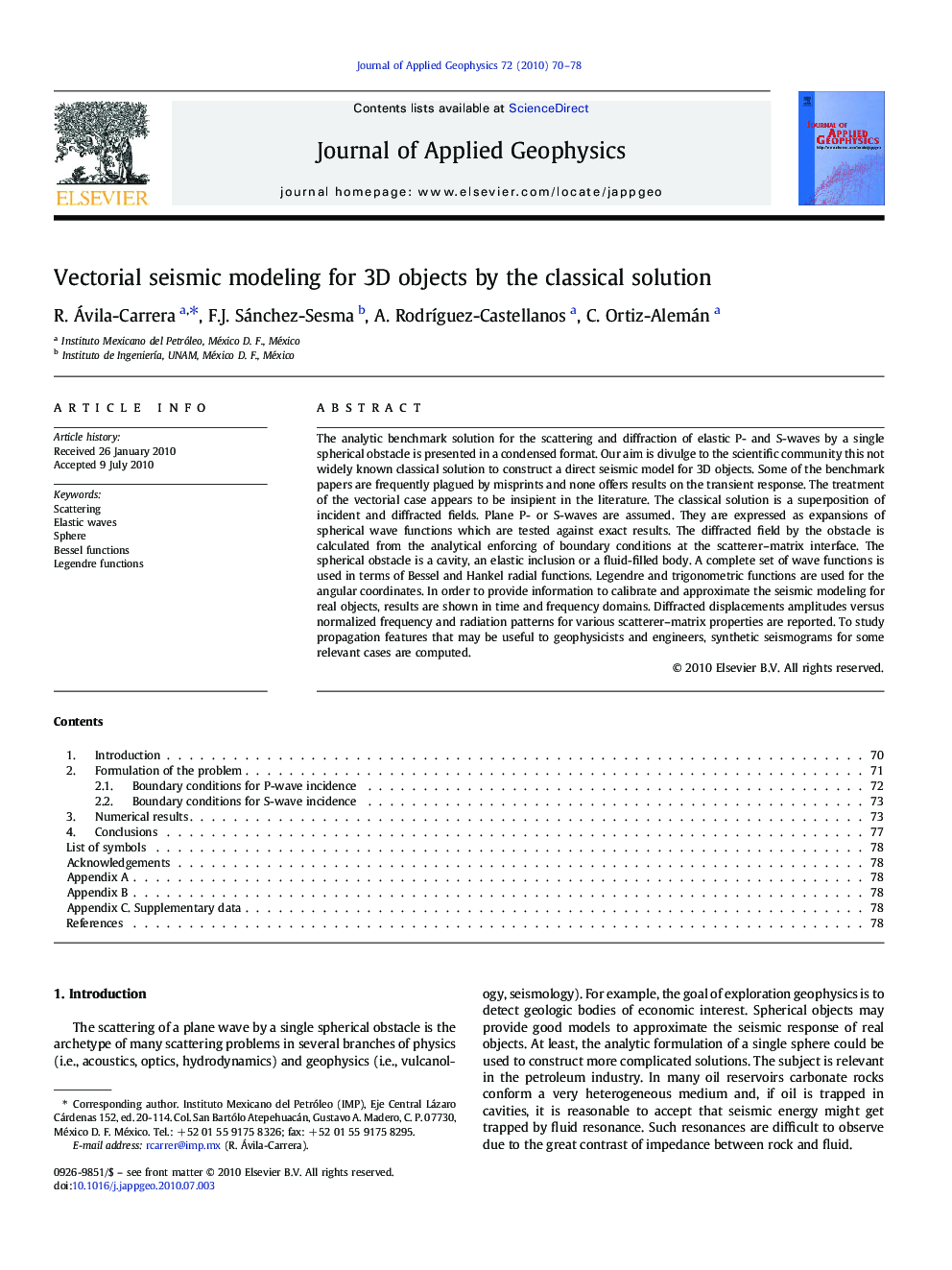| Article ID | Journal | Published Year | Pages | File Type |
|---|---|---|---|---|
| 4740762 | Journal of Applied Geophysics | 2010 | 9 Pages |
The analytic benchmark solution for the scattering and diffraction of elastic P- and S-waves by a single spherical obstacle is presented in a condensed format. Our aim is divulge to the scientific community this not widely known classical solution to construct a direct seismic model for 3D objects. Some of the benchmark papers are frequently plagued by misprints and none offers results on the transient response. The treatment of the vectorial case appears to be insipient in the literature. The classical solution is a superposition of incident and diffracted fields. Plane P- or S-waves are assumed. They are expressed as expansions of spherical wave functions which are tested against exact results. The diffracted field by the obstacle is calculated from the analytical enforcing of boundary conditions at the scatterer–matrix interface. The spherical obstacle is a cavity, an elastic inclusion or a fluid-filled body. A complete set of wave functions is used in terms of Bessel and Hankel radial functions. Legendre and trigonometric functions are used for the angular coordinates. In order to provide information to calibrate and approximate the seismic modeling for real objects, results are shown in time and frequency domains. Diffracted displacements amplitudes versus normalized frequency and radiation patterns for various scatterer–matrix properties are reported. To study propagation features that may be useful to geophysicists and engineers, synthetic seismograms for some relevant cases are computed.
Research highlights►Novel study of the scattering of elastic P- and S-waves by a single spherical obstacle in frequency and time domains.►The incident field for P- or S-waves is given as an expansion of re-derived spherical wave functions.►We use a complete set of revised radial functions for the incident and diffracted fields in terms of spherical Bessel and Hankel functions, respectively.►Boundary conditions at the scatterer–matrix interface are defined for an elastic inclusion, a cavity and a fluid-filled sphere.►Spectral amplitudes versus normalized frequency, radiation patterns varying the scatterer–matrix properties and seismograms for relevant cases are depicted.
